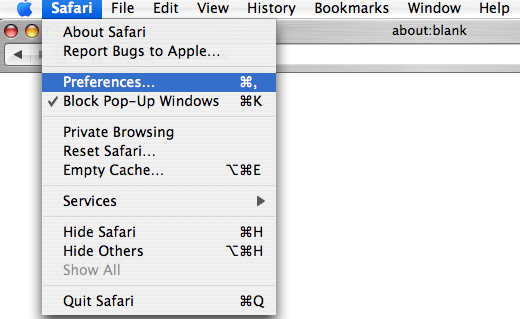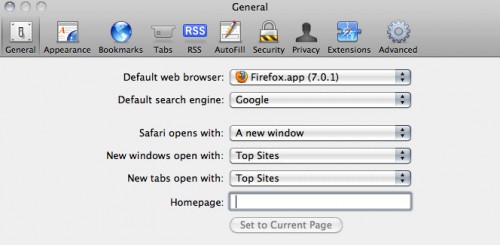What is ExpandedCommand
ExpandedCommand is a potentially unwanted application (PUA) that belongs to the Adware category . Adware can make big problem to your MAC system. Adware also known as ‘ad-supported’ software is malicious program which displays a lot of adverts in form of popup windows, discounting deals, banners or even fake alerts on the web-browser. Adware can seriously affect your privacy, your computer’s performance and security. Adware software can be installed onto your machine without your knowledge.

Unwanted ads
Does adware software steal your confidential data? Adware can gather and transmit privacy information without your knowledge. Adware be able to track information about web-pages visited, web-browser and system information, and your computer IP address.
So, if you happen to encounter the adware, then be quick and take effort to get rid of it as soon as possible. Follow the step-by-step guidance below to remove ExpandedCommand adware. Let us know how you managed by sending us your comments please.
How does ExpandedCommand get on your MAC system
Adware software usually spreads along with free programs that downloaded from the Web. Which means that you need to be proactive and carefully read the Terms of use and the License agreement properly. For the most part, adware software and PUPs will be clearly described, so take the time to carefully read all the information about the software that you downloaded and want to install on your MAC.
Threat Summary
| Name | ExpandedCommand, Expanded Command 1.0 app |
| Type | adware software, potentially unwanted application (PUA), pop-ups, pop-up advertisements, popup virus |
| Symptoms |
|
| Removal | ExpandedCommand removal guide |
How to remove ExpandedCommand
In the few simple steps below we will have a look at the adware and how to remove ExpandedCommand ads from Firefox, Chrome and Safari web browsers for Mac, natively or by using a few free removal tools. Certain of the steps below will require you to close this web-page. So, please read the guide carefully, after that bookmark it or open it on your smartphone for later reference.
To remove ExpandedCommand, follow the steps below:
- How to get rid of ExpandedCommand adware without any software
- Automatic Removal of ExpandedCommand
- How to stay safe online
- To sum up
How to get rid of ExpandedCommand adware without any software
The step-by-step guide will help you manually get rid of ExpandedCommand from a browser. If you are not good at computers, we advise that you use the free utilities listed below.
Removing the ExpandedCommand, check the list of installed programs first
First, you should try to identify and uninstall the program that causes the appearance of annoying ads or web browser redirect, using the ‘Applications’ list that located in the Finder.
Make sure you have closed all web-browsers and other applications. Next, remove any unknown and suspicious software from MAC OS using the Finder.
Open Finder and click “Applications”.

Look around the entire list of software installed on your MAC system. Most probably, one of them is the ExpandedCommand adware. Select the questionable program or the program that name is not familiar to you and delete it.
Drag the questionable program from the Applications folder to the Trash.
Most important, don’t forget, select Finder -> Empty Trash.
Delete ExpandedCommand from Mozilla Firefox
If your Mozilla Firefox browser is hijacked by ExpandedCommand or an unknown search engine displays results for your search, then it may be time to perform the web-browser reset. However, your saved passwords and bookmarks will not be changed, deleted or cleared.
First, launch the Mozilla Firefox. Next, click the button in the form of three horizontal stripes (![]() ). It will show the drop-down menu. Next, click the Help button (
). It will show the drop-down menu. Next, click the Help button (![]() ).
).

In the Help menu click the “Troubleshooting Information”. In the upper-right corner of the “Troubleshooting Information” page press on “Refresh Firefox” button like the one below.

Confirm your action, click the “Refresh Firefox”.
Remove ExpandedCommand from Chrome
Reset Chrome settings will help you to completely reset your web-browser. The result of activating this function will bring Chrome settings back to its original settings. This can remove ExpandedCommand ads and disable malicious extensions. It’ll keep your personal information such as browsing history, bookmarks, passwords and web form auto-fill data.

- First, start the Google Chrome and press the Menu icon (icon in the form of three dots).
- It will open the Chrome main menu. Choose More Tools, then press Extensions.
- You will see the list of installed addons. If the list has the extension labeled with “Installed by enterprise policy” or “Installed by your administrator”, then complete the following instructions: Remove Chrome extensions installed by enterprise policy.
- Now open the Google Chrome menu once again, press the “Settings” menu.
- Next, click “Advanced” link, which located at the bottom of the Settings page.
- On the bottom of the “Advanced settings” page, press the “Reset settings to their original defaults” button.
- The Chrome will show the reset settings prompt as shown on the screen above.
- Confirm the web browser’s reset by clicking on the “Reset” button.
- To learn more, read the post How to reset Google Chrome settings to default.
Remove ExpandedCommand adware from Safari
If you find that Safari internet browser settings like newtab page, startpage and search provider having been modified by ExpandedCommand , then you may revert back your settings, via the reset web-browser procedure.
Run Safari web browser. Next, choose Preferences from the Safari menu.

First, click the “Security” tab. Here, select “Block pop-up windows”. It will block some types of pop ups.
Now, click the “Extensions” icon. Look for dubious extensions on left panel, select it, then press the “Uninstall” button. Most important to remove all dubious add-ons from Safari.
Once complete, check your homepage and search provider settings. Click “General” tab. Make sure that the “Homepage” field contains the website you want or is empty.

Make sure that the “Search engine” setting shows your preferred search provider. In some versions of Safari, this setting is in the “Search” tab.
Automatic Removal of ExpandedCommand
If your computer is still infected with ExpandedCommand , then the best method of detection and removal is to use an antimalware scan on the MAC system. Download free malicious software removal utilities below and start a full system scan. It will allow you remove all components of the adware from hardisk and Windows registry.
How to delete ExpandedCommand with MalwareBytes
You can remove ExpandedCommand automatically through the use of MalwareBytes. We suggest this free malicious software removal utility because it can easily remove browser hijacker, adware software, PUPs and toolbars with all their components such as files, folders and registry entries.

Download MalwareBytes Anti Malware from the link below.
20949 downloads
Author: Malwarebytes
Category: Security tools
Update: September 10, 2020
Once the downloading process is finished, run it and follow the prompts. Click the “Scan” button . MalwareBytes AntiMalware tool will start scanning the whole Apple Mac to find out the ExpandedCommand adware software. A scan can take anywhere from 10 to 30 minutes, depending on the count of files on your machine and the speed of your MAC. Next, you need to click the “Quarantine” button.
The MalwareBytes is a free tool that you can use to remove all detected folders, files, malicious services and so on.
How to stay safe online
If you want to remove intrusive advertisements, internet browser redirects and pop ups, then install an ad blocker application such as AdGuard. It can block unwanted ads and pop-ups, stop websites from tracking your online activities when using the Safari, Mozilla Firefox and Google Chrome. So, if you like surf the Internet, but you do not like undesired ads and want to protect your Apple Mac from malicious websites, then the AdGuard is your best choice.

Please go to the link below to download the latest version of AdGuard for Apple Mac.
3755 downloads
Author: © Adguard
Category: Security tools
Update: January 17, 2018
After the downloading process is complete, launch the downloaded file. You will see the “Setup Wizard” screen. Follow the prompts.
Each time, when you run your MAC, AdGuard will launch automatically and stop unwanted popup ads, block malicious and misleading web-sites.
To sum up
Now your computer should be free of the ExpandedCommand adware. We suggest that you keep AdGuard (to help you stop unwanted popup advertisements and annoying malicious web pages) and MalwareBytes AntiMalware (MBAM) (to periodically scan your computer for new malicious software, hijackers and adware). Make sure that you have all the Critical Updates recommended for Mac operating system. Without regular updates you WILL NOT be protected when new browser hijackers, malicious software and adware software are released.
If you are still having problems while trying to delete ExpandedCommand ads from your internet browser, then ask for help here.

















